
Rabbit Anti-protein C antibody
Anticoagulant protein C; Autoprothrombin IIA; Blood coagulation factor XIV; EC 3.4.21.69; PC; PROC; PROC1; Vitamin K dependent protein C precursor; APC; EC 3.4.21.69; PC; proC; PROC_HUMAN; Protein C (inactivator of coagulation factors Va and VIIIa); Vita
View History [Clear]
Details
Product Name protein C Chinese Name 维生素K依赖的蛋白C重链抗体 Alias Anticoagulant protein C; Autoprothrombin IIA; Blood coagulation factor XIV; EC 3.4.21.69; PC; PROC; PROC1; Vitamin K dependent protein C precursor; APC; EC 3.4.21.69; PC; proC; PROC_HUMAN; Protein C (inactivator of coagulation factors Va and VIIIa); Vitamin K dependent protein C; Vitamin K-dependent protein C; Anticoagulant protein C; Vitamin K-dependent protein C heavy chain. Research Area Cardiovascular Cell biology immunology Signal transduction Immunogen Species Rabbit Clonality Polyclonal React Species Human, Mouse, Rat, (predicted: Chicken, Dog, Pig, Cow, ) Applications WB=1:500-2000 ELISA=1:5000-10000 IHC-P=1:100-500 IHC-F=1:100-500 IF=1:100-500 (Paraffin sections need antigen repair)
not yet tested in other applications.
optimal dilutions/concentrations should be determined by the end user.Theoretical molecular weight 29/46kDa Cellular localization Secretory protein Form Liquid Concentration 1mg/ml immunogen KLH conjugated synthetic peptide derived from human Vitamin K-dependent protein C heavy chain: 371-460/461 Lsotype IgG Purification affinity purified by Protein A Buffer Solution 0.01M TBS(pH7.4) with 1% BSA, 0.03% Proclin300 and 50% Glycerol. Storage Shipped at 4℃. Store at -20 °C for one year. Avoid repeated freeze/thaw cycles. Attention This product as supplied is intended for research use only, not for use in human, therapeutic or diagnostic applications. PubMed PubMed Product Detail This gene encodes a vitamin K-dependent plasma glycoprotein. The encoded protein is cleaved to its activated form by the thrombin-thrombomodulin complex. This activated form contains a serine protease domain and functions in degradation of the activated forms of coagulation factors V and VIII. Mutations in this gene have been associated with thrombophilia due to protein C deficiency, neonatal purpura fulminans, and recurrent venous thrombosis.[provided by RefSeq, Dec 2009].
Function:
Protein C is a vitamin K-dependent serine protease that regulates blood coagulation by inactivating factors Va and VIIIa in the presence of calcium ions and phospholipids.
Subunit:
Synthesized as a single chain precursor, which is cleaved into a light chain and a heavy chain held together by a disulfide bond. The enzyme is then activated by thrombin, which cleaves a tetradecapeptide from the amino end of the heavy chain; this reaction, which occurs at the surface of endothelial cells, is strongly promoted by thrombomodulin.
Tissue Specificity:
Plasma; synthesized in the liver.
Post-translational modifications:
The vitamin K-dependent, enzymatic carboxylation of some Glu residues allows the modified protein to bind calcium.
N- and O-glycosylated. Partial (70%) N-glycosylation of Asn-371 with an atypical N-X-C site produces a higher molecular weight form referred to as alpha. The lower molecular weight form, not N-glycosylated at Asn-371, is beta. O-glycosylated with core 1 or possibly core 8 glycans.
The iron and 2-oxoglutarate dependent 3-hydroxylation of aspartate and asparagine is (R) stereospecific within EGF domains.
May be phosphorylated on a Ser or Thr in a region (AA 25-30) of the propeptide.
DISEASE:
Defects in PROC are the cause of thrombophilia due to protein C deficiency, autosomal dominant (THPH3) [MIM:176860]. A hemostatic disorder characterized by impaired regulation of blood coagulation and a tendency to recurrent venous thrombosis. However, many adults with heterozygous disease may be asymptomatic. Individuals with decreased amounts of protein C are classically referred to as having type I protein C deficiency and those with normal amounts of a functionally defective protein as having type II deficiency.
Defects in PROC are the cause of thrombophilia due to protein C deficiency, autosomal recessive (THPH4) [MIM:612304]. A hemostatic disorder characterized by impaired regulation of blood coagulation and a tendency to recurrent venous thrombosis. It results in a thrombotic condition that can manifest as a severe neonatal disorder or as a milder disorder with late-onset thrombophilia. The severe form leads to neonatal death through massive neonatal venous thrombosis. Often associated with ecchymotic skin lesions which can turn necrotic called purpura fulminans, this disorder is very rare.
Similarity:
Belongs to the peptidase S1 family.
Contains 2 EGF-like domains.
Contains 1 Gla (gamma-carboxy-glutamate) domain.
Contains 1 peptidase S1 domain.
SWISS:
P04070
Gene ID:
5624
Database links:Entrez Gene: 5624 Human
Omim: 612283 Human
SwissProt: P04070 Human
Unigene: 224698 Human
活化蛋白C是一种丝氨酸蛋白酶,也是一种抑癌基因,参与细胞信号的传导,在细胞分裂、细胞黏附中有重要的作用
有人用于抑制凝血 (抗凝作用)促进纤维蛋白溶解及抗炎作用的研究, 近年来有学者认为APC还可以抑制vascular endothelial cell凋亡, 有抑制Tumour坏死因子产生、限制凝血酶诱导炎症反应与微vascular endothelial cell的一些作用。
Product Picture
Hcclm3(Human) Cell Lysate at 30 ug
Primary: Anti-protein C (SL0040R) at 1/1000 dilution
Secondary: IRDye800CW Goat Anti-Rabbit IgG at 1/20000 dilution
Predicted band size: 29/46 kD
Observed band size: 29/46 kD
Sample:
HepG2(Human) Cell Lysate at 30 ug
Primary: Anti-protein C (SL0040R) at 1/1000 dilution
Secondary: IRDye800CW Goat Anti-Rabbit IgG at 1/20000 dilution
Predicted band size: 29/46 kD
Observed band size: 46 kD
Sample: Liver (Mouse) Lysate at 40 ug
Primary: Anti-protein C (SL0040R) at 1/300 dilution
Secondary: IRDye800CW Goat Anti-Rabbit IgG at 1/20000 dilution
Predicted band size: 29/46 kD
Observed band size: 46 kD
Tissue/cell: Mouse spleen tissue; 4% Paraformaldehyde-fixed and paraffin-embedded;
Antigen retrieval: citrate buffer ( 0.01M, pH 6.0 ), Boiling bathing for 15min; Block endogenous peroxidase by 3% Hydrogen peroxide for 30min; Blocking buffer (normal goat serum,C-0005) at 37℃ for 20 min;
Incubation: Anti-protein C Polyclonal Antibody, Unconjugated(SL0040R) 1:200, overnight at 4°C, followed by conjugation to the secondary antibody(SP-0023) and DAB(C-0010) staining
Tissue/cell: Rat liver tissue; 4% Paraformaldehyde-fixed and paraffin-embedded;
Antigen retrieval: citrate buffer ( 0.01M, pH 6.0 ), Boiling bathing for 15min; Block endogenous peroxidase by 3% Hydrogen peroxide for 30min; Blocking buffer (normal goat serum,C-0005) at 37℃ for 20 min;
Incubation: Anti-protein C Polyclonal Antibody, Unconjugated(SL0040R) 1:200, overnight at 4°C, followed by conjugation to the secondary antibody(SP-0023) and DAB(C-0010) staining
Tissue/cell: Human brain glioma tissue; 4% Paraformaldehyde-fixed and paraffin-embedded;
Antigen retrieval: citrate buffer ( 0.01M, pH 6.0 ), Boiling bathing for 15min; Block endogenous peroxidase by 3% Hydrogen peroxide for 30min; Blocking buffer (normal goat serum,C-0005) at 37℃ for 20 min;
Incubation: Anti-Activated protein C/PROC1 Polyclonal Antibody, Unconjugated(SL0040R) 1:200, overnight at 4°C, followed by conjugation to the secondary antibody(SP-0023) and DAB(C-0010) staining
Tissue/cell: rat colitis tissue;4% Paraformaldehyde-fixed and paraffin-embedded;
Antigen retrieval: citrate buffer ( 0.01M, pH 6.0 ), Boiling bathing for 15min; Blocking buffer (normal goat serum,C-0005) at 37℃ for 20 min;
Incubation: Anti-Activated protein C/PROC1 Polyclonal Antibody, Unconjugated(SL0040R) 1:200, overnight at 4°C; The secondary antibody was Goat Anti-Rabbit IgG, PE conjugated (SL0295G-PE)used at 1:200 dilution for 40 minutes at 37°C.
Partial purchase records(bought amounts latest0)
No one bought this product
User Comment(Total0User Comment Num)
- No comment
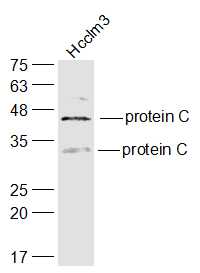
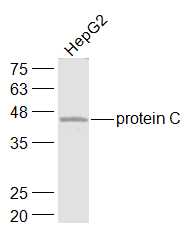
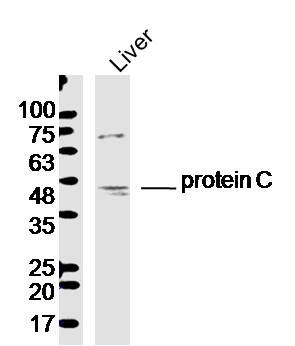
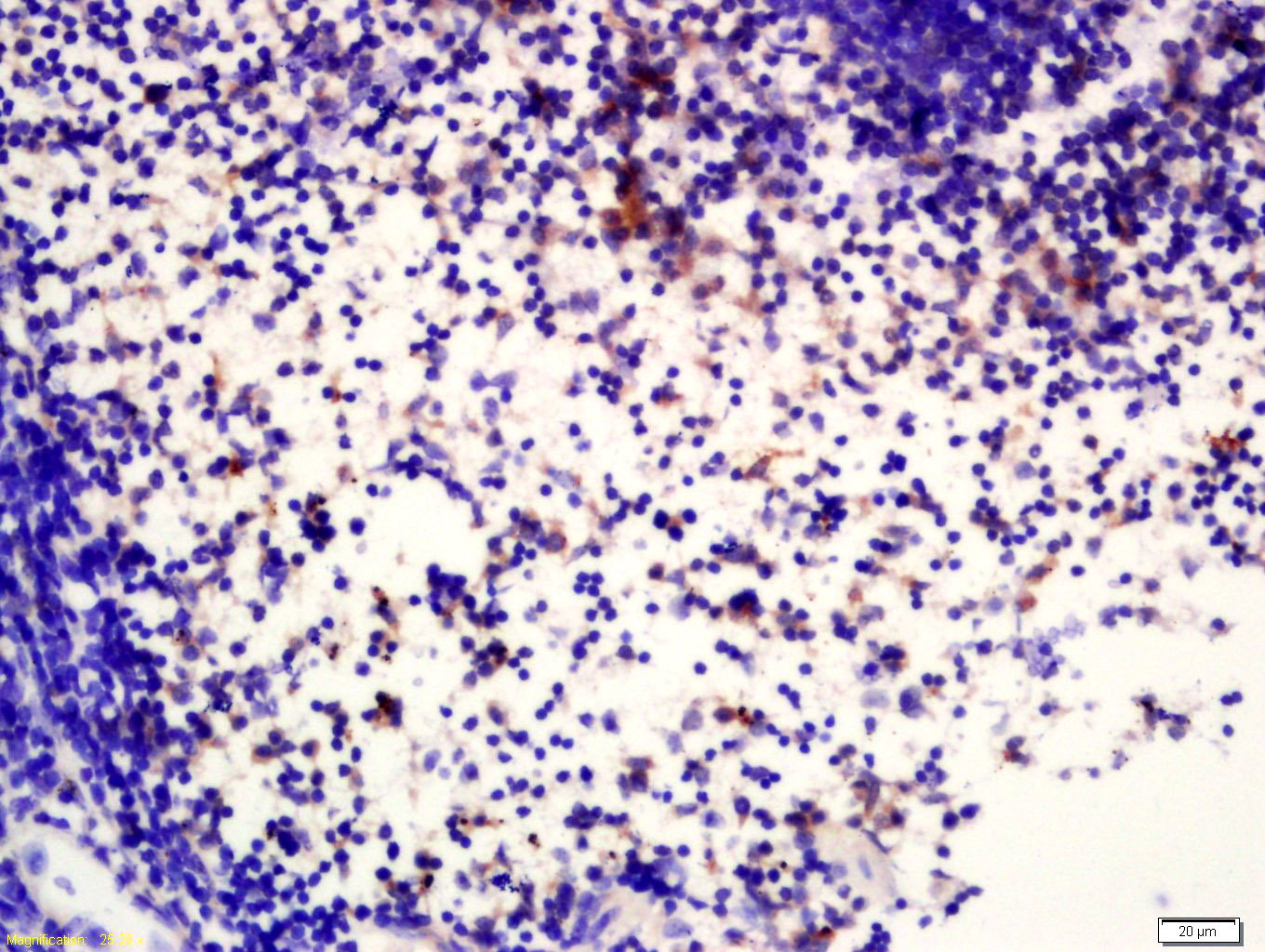

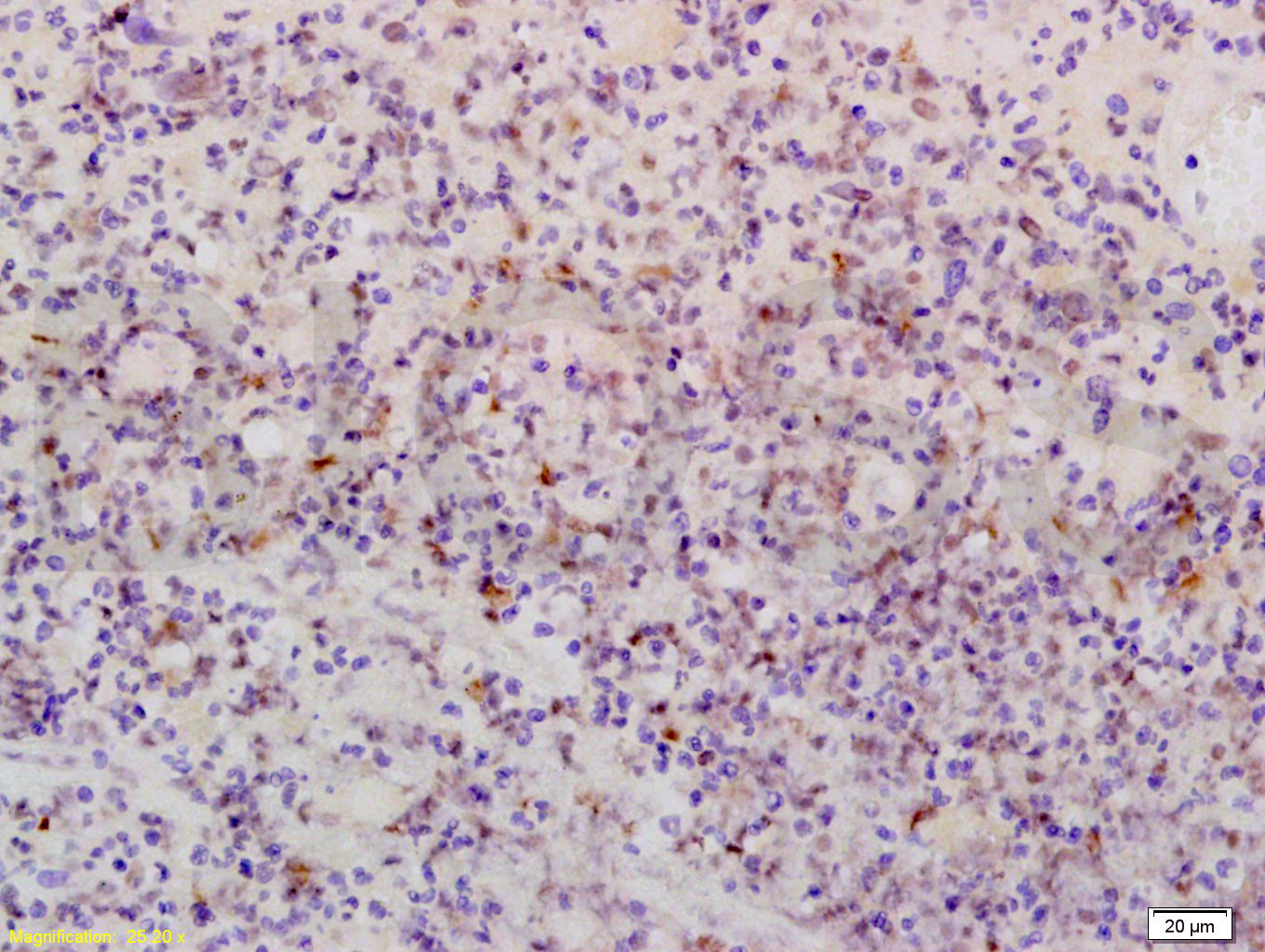
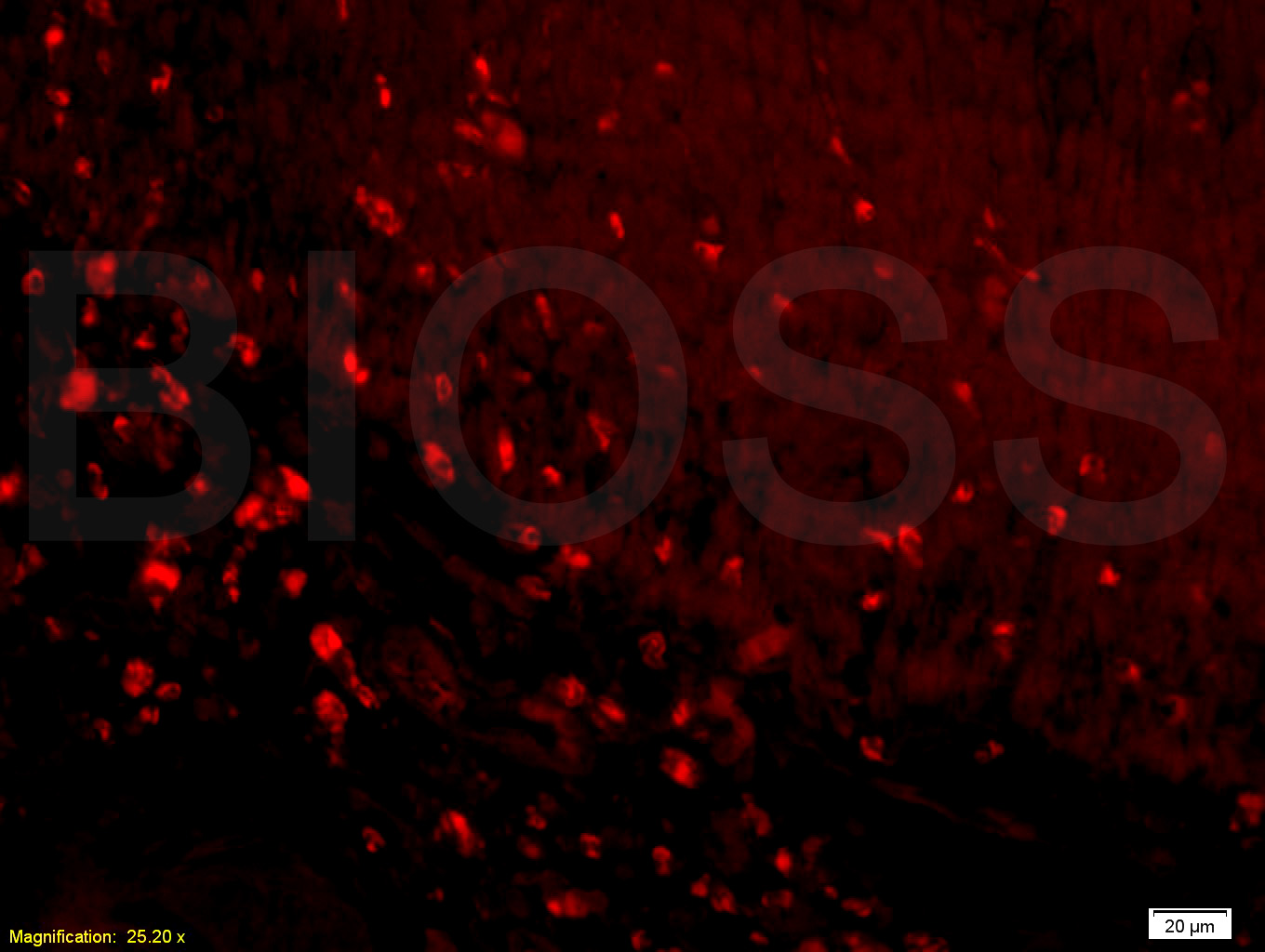


 +86 571 56623320
+86 571 56623320




